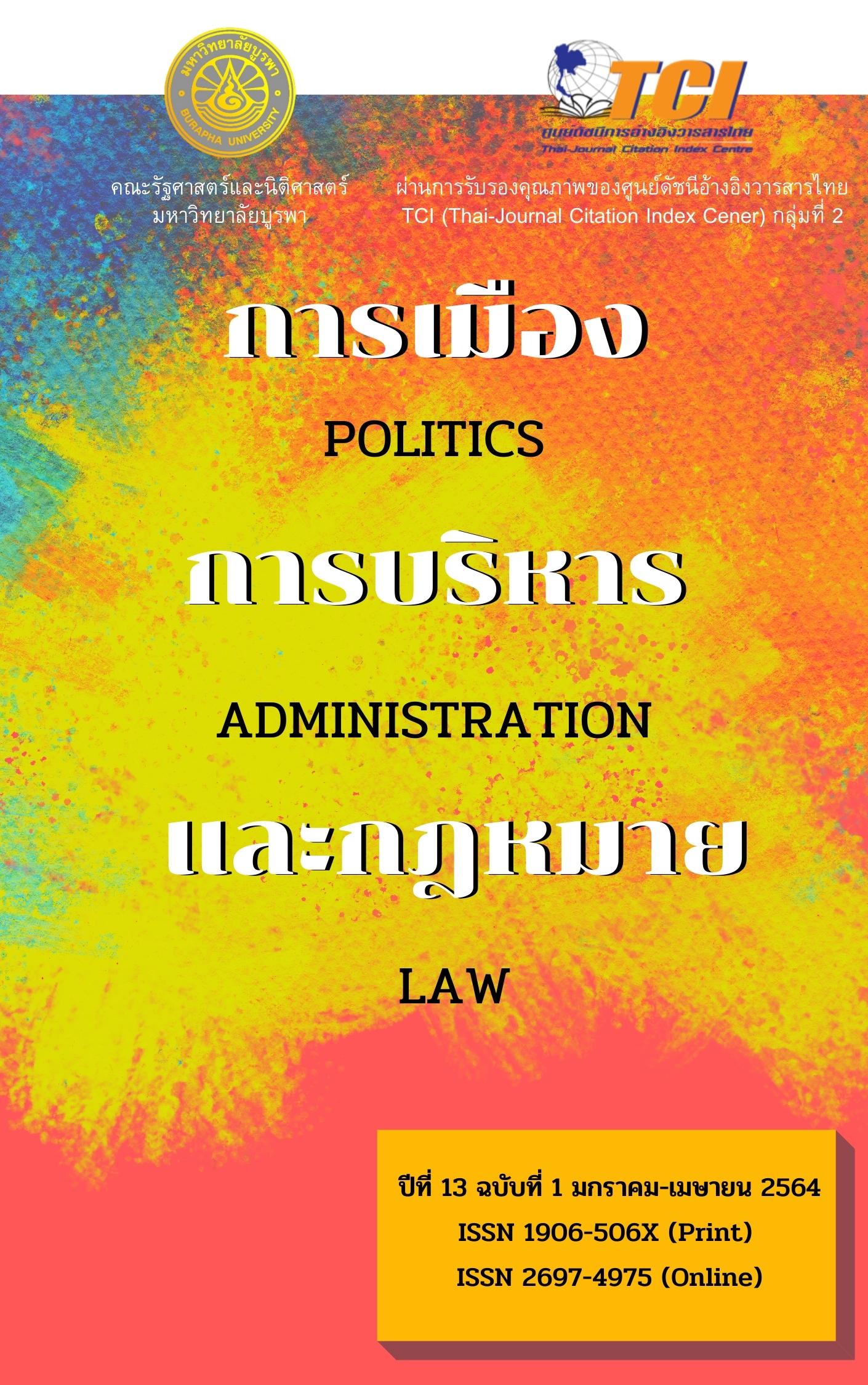Consumption of Food Away From Home (FAFH): Case Study of Gen Y in Bangkok
Keywords:
Consumption of food, Food away from home (FAFH), Generation Y (Gen Y)Abstract
This research aims to study the consumption behavior and determine major variables influencing the consumption of Food Away From Home (FAFH) of Gen Y in Bangkok. Data used in the analysis were collected from Gen Y in Bangkok by using questionnaires. Variables used in the study of Food Away From Home (FAFH) of Gen Y in Bangkok were: time spent outside, family’s eating habit, online media, income, and number of meals per day. The findings are as follows: Gen Y in Bangkok had FAFH 2.64 times per day. The cost of having FAFH was 226.83 baht per meal. Having FAFH alone by Gen Y in Bangkok occupied the largest proportion (46.2%), followed by having it with a lover (20.4%), friends (19.3%), family (11.8%), and spouse (2%). The FAFH were mostly bought from street food shops (52.8%), followed by general food shops (17.2%), convenience stores (9.5%) and department stores (9.3%). The majority of FAFH of Gen Y in Bangkok was rice and dishes eaten with rice. The reasons contributing to them having FAFH, with highest contribution first, were online media, followed by the hustle of urban society, higher cost of home cooking relative to FAFH, density of population and traffic jams, and the rise of food delivery services. Variable of time spent outside, family’s eating habit, online media, income, and the number of meals per day influenced the consumption of FAFH of Gen Y in Bangkok at a statistically significant level. These variables had positive correlation and were explanatory of changes in the consumption of FAFH of Gen Y in Bangkok at 81.6 percent. In comparing the variables influencing the consumption of FAFH of Gen Y in Bangkok, the variable of time spent outside influenced the consumption of FAFH of Gen Y in Bangkok at the highest level (beta = 0.510). Next in descending order were the variables of family’s eating habit (beta = 0.375), online media (Beta = 0.128), the number of meals per day (Beta = 0.068), and income (Beta = 0.065).
References
กรมสุขภาพจิต. (2562). Gen Y/ Gen Me กลุ่มผู้กุมชะตาโลก. วันที่ค้นข้อมูล 6 ธันวาคม 2562, เข้าถึงได้จาก https://www.dmh.go.th/news/view.asp?id=1251
Greedisgoods. (2561). Gen Y คืออะไร ? และพฤติกรรม Generation Y. วันที่ค้นข้อมูล 8 มิถุนายน 2562, เข้าถึงได้จาก https://greedisgoods.com/gen-y-%E0%B8%84%E0%B8%B7%E0%B8%AD-generation-y/ฐานเศรษฐกิจ. (2560). ประชากรไทย GenY ใหญ่สุด พฤติกรรมสร้างโอกาส-ความเสี่ยง (1). วันที่ค้นข้อมูล 30 พฤษภาคม 2562, เข้าถึงได้จาก http://www.thansettakij.com/content/234315
BLT Bangkok. (2561). เทรนด์สุขภาพมาแรง คนเมืองยุคใหม่ตั้งเป้าชีวิตดีมีสุข. วันที่ค้นข้อมูล 15 กรกฎาคม 2562, เข้าถึงได้จาก http://www.bltbangkok.com/article/info/28/774
BIZ & MARKETING NEWS. (2561). คนไทย Enjoy Eating 7 มื้อต่อวัน! “ค่าอาหาร” ค่าใช้จ่ายอันดับ 1 ของคนไทย ทะลุ 1.8 ล้านล้านบาท. วันที่ค้นข้อมูล 29 พฤษภาคม 2562, เข้าถึงได้จาก https://www.marketingoops.com/news/biznews/thai-consumer-spending-on-food/
Euromonitor. (2562). พฤติกรรมการรับประทานอาหารของคนไทย. วันที่ค้นข้อมูล 29 กรกฎาคม 2562, เข้าถึงได้จาก https://www. marketingoops.com/news/biz-news/thai-consumer-spending-on-food/
สำนักงานสถิติแห่งชาติ กระทรวงดิจิทัลเพื่อเศรษฐกิจและสังคม. (2561). ภาวะเศรษฐกิจและสังคมของครัวเรือนไทยปี 2561. วันที่ค้นข้อมูล 10 มิถุนายน 2562, เข้าถึงได้จาก http://www.nso.go.th/sites/2014/Lists/Infographic/Attachments/70/infographic_SES2561.pdf
สำนักงานสถิติแห่งชาติ. (2562). วันที่ค้นข้อมูล 30 พฤษภาคม 2562, เข้าถึงได้จาก http://statbbi.nso.go.th/staticreport/page/sector/th/01.aspx
Becker, G. S. (1965). A Theory of the Allocation of Time. The Economic Journal. 75, 493-517.
Bloemer, J., & Ruyter, K. D. (1998). On the Relationship between Store Image, Store Satisfaction and Store Loyalty. European Journal of Marketing, 32(5/6), 499-513.
Byrne, P., Capps, O. Jr., & Saha, A. (1998). Analysis of Quick-serve, Mid-scale, and Up-scale Food Away from Home Expenditures. The International Food and Agribusiness Management Review, 1, 51-72.
Cohen, N. (2016). Urban Food Policy: A Strategies for Sustainable Food Systems. Retrieved on June 19, 2019, from https://urbanfoodpolicy.com/2016/07/08/usda-charts-the-growth-of-food-away-from-home/
Economics Online. (2020). Consumer Demand. Retrieved June 29, 2019, from https://www.economicsonline.co.uk/Competitive_markets/Consumer_demand.html
Grewal, D., & Levy, M. (2008). Consumer Behaviour. In Marketing, (pp. 139-141). New York: McGraw Hill.
Hawkins, D. I., Best, R. J., & Coney, K. A. (2004). Consumer Behavior – Building Marketing Strategy. (9th ed.). New York: McGraw-Hill.
Hinkle, D. E, William, W., & Stephen, G. J. (1998). Applied Statistics for the Behavior Sciences (4th ed.). New York: Houghton Mifflin.
Juyal. (2012). Study on the Factors Affecting Customer Purchase Activity in Retail Stores by Confirmatory Factor Analysis. Espacios, 38(61), 30.
Kotler, P., & Armstrong, G. (2006). Consumer Behaviour. In Principles of Marketing (11th ed.). Upper Saddle River, New Jersey: Pearson Prentice Hall.
Küster,. I., et al. (2016). Retrieved on July, 20 2019, from https://www.researchgate.net/publication/ 303635034_How_does_the_online_service_level_influence_consumers'_purchase_intentions_ before_a_transaction_A_formative_approach
McCracken, V., & Brandt, J. (1987). Household Consumption of Food Away from Home: Total
Expenditure and by Type of Food Facility. American Journal of Agricultural Economics, 69, 274-284.
Moreno, M. F., el. (2017). The Characterization of the Millennials and Their Buying Behavior. International Journal of Marketing Studies, 9(5), 135-144.
Perterson, A. R. (1994). A Meta-Analysis of Cronbach's Coefficient Alpha. Journal of Consumer Research. 21(2), 381-391.
Revista ESPACIOS. (2017). Study on the factors affecting customer purchase activity in retail stores by confirmatory factor analysis. Retrieved July 15, 2019, from https://www.revistaespacios.com/a17v38n61/a17v38n61p30.pdf
Downloads
Published
Issue
Section
License

This work is licensed under a Creative Commons Attribution-NonCommercial-NoDerivatives 4.0 International License.






